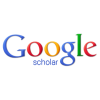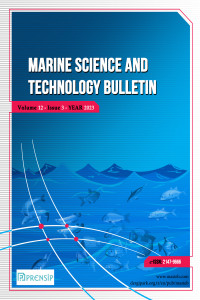Research Article
Aim & Scope
Marine Science and Technology Bulletin is a double-blind peer-reviewed and open-access journal publishing high-quality papers that are original research articles, short communications, and reviews for scientists engaged in all aspects of marine sciences and technology, fisheries and aquatic sciences, and food processing technologies.
The scope of the journal covers (but not limited to) below research topics:
- Marine Sciences,
- Marine Technology,
- Fisheries and Aquatic Sciences,
- Environmental Science and Technology,
- Oceanography,
- Marine Biology,
- Marine Ecology,
- Marine Geology,
- Marine Geochemistry,
- Marine Chemistry,
- Marine Engineering,
- Ocean Engineering,
- Offshore and Underwater Technology,
- Aquaculture,
- Fish Nutrition,
- Disease and Treatment,
- Fisheries Technology,
- Aquatic Food Processing,
- Microbiology,
- Algal Biotechnology,
- Protection of Organisms Living in Marine Habitats,
- Petrology and Sedimentation,
- Climate Change & Sea Level Changes,
- Marine Pollution,
- Maritime,
- Maritime Organizations,
- Marine/Maritime Affairs,
- Management and Economics,
- Naval Architecture,
- Unmanned Surface/Underwater Vehicles,
- Remote Sensing & GIS.
Author Guidelines
Manuscripts must be submitted to the journal in electronic version only via the online submission system following the Instructions for Authors.
Download the full paper template from here.
Types of Paper
Original research papers; review articles; short communications.
- Original research papers; original full-length research papers which have not been published previously and should not exceed 7500 words or 25 manuscript pages (including tables and illustrations)
- Review articles; on topical subjects and up to 10,000 words or 25 manuscript pages (including tables and figures)
- Short communications; describing work that may be of a preliminary nature (preferably no more than 3000 or 10 manuscript pages including tables and figures).
Article Processing Charges (APC)
Marine Science and Technology Bulletin does not charge any article submission, processing, or publication fees.
Preparation of Manuscripts
Papers must be written in English. Prepare your text using word-processing software and save it in “.doc” or “.docx” formats. Manuscripts must be structured in the following order;
- Title page (Separate file)
- Title
- Author names, affiliations
- Corresponding author’s e-mail, Telephone
- ORCID iD and e-mail addresses for all authors
- Main text
- Abstract
- Keywords
- Introduction
- Material and Methods
- Results
- Discussion
- Conclusion
- Acknowledgements (if required)
- Compliance with Ethical Standards
- a) Authors' Contributions
- b) Conflict of Interest
- c) Statement on the Welfare of Animals
- d) Statement of Human Rights
- e) Data Availability Statement
- References
- Table(s) with caption(s) (on appropriate location in the text)
- Figure(s) with caption(s) (on appropriate location in the text)
- And appendices (if any).
Use a 12-point font (Times New Roman preferred), including the references, table headings and figure captions, double-spaced and with 25 mm margins on all sides of A4 size paper throughout the manuscript. The text should be in single-column format. In particular, do not use hyphenated words. The names of genera and species should be given in italics and, when first mentioned in the text, should be followed by the authority. Authors should consult a recent issue of the journal for style if possible.
Title Page
The title page should be included;
- Concise and informative title. Avoid abbreviations and formulae
- The first name(s) and surname(s) of the author(s) (The corresponding author should be identified with an asterisk and footnote. All other footnotes (Author(s) affiliation address(es)) should be identified with superscript numbers)
- Author(s) affiliation address(es) (followed by institution, faculty/school, department, city with postcode, and country) of each author(s))
- The e-mail address, phone number, fax number of the corresponding author
- ORCID iD and e-mail addresses for all authors.
Main Text
- Abstract (should be between 150 and 500 words. References and abbreviations should be avoided)
- Keywords (provide a maximum of 6 keywords)
- Articles must be structured in the conventional format such as Introduction, Material and Methods, Results, Discussion, Conclusion, Acknowledgements, Compliance with Ethical Standards, and References.
- Each page must be numbered, and lines must be consecutively numbered from the start to the end of the manuscript.
- Do not justify the right-hand margin.
- The first line of each paragraph must be indented. Do not put a blank line between paragraphs.
- The first mention in the text of any taxon must be followed by its authority including the year.
- Use italics for emphasis.
- Use only SI (international system) units.
Acknowledgements
Keep these to the absolute minimum and place them before the reference section.
Compliance with Ethical Standards
The corresponding author will include a summary statement in the text of the manuscript in a separate section before the reference list. See below examples of disclosures:
- a) Authors’ Contributions
Please provide the contributions of the authors for the paper. Use the first letters of the names and surnames of the authors. See below for an example.
SA: Designed the study. Carried out the field study.
SB: Wrote the first draft of the manuscript.
SK: Performed laboratory experiments and managed statistical analysis.
All authors read and approved the final manuscript.
or
SA: Manuscript design, Field sampling, Draft checking.
SB: Writing, Draft checking, Reading, Editing.
SK: Laboratory experiments, Statistical analyses.
All authors read and approved the final manuscript.
- b) Conflict of Interest
Any existing conflict of interest should be given here.
If no conflict exists, the authors should state:
Conflict of Interest: The authors declare that there is no conflict of interest.
- c) Statement on the Welfare of Animals
If the animals used in the study;
The welfare of animals used for research must be respected. When reporting experiments on animals, authors should indicate the following statement:
Ethical approval: All applicable international, national, and/or institutional guidelines for the care and use of animals were followed.
Or, for retrospective studies; a summary statement in the text of the manuscript should be included as follow:
Ethical approval: For this type of study, formal consent is not required.
- d) Statement of Human Rights
When reporting studies that involve human participants, authors should include the following statement:
Ethical approval: The studies have been approved by the appropriate institutional and/or national research ethics committee and have been performed in accordance with the ethical standards.
Authors must ensure that participants have formal consent and their privacy is protected.
Or, for retrospective studies; a summary statement in the text of the manuscript should be included as follow:
Ethical approval: For this type of study, formal consent is not required.
- e) Data Availability Statements
Data Availability Statements should be placed in the back matter of the manuscript, just before References.
Examples of Data Availability Statements
- The data that support the findings of this study are available from the corresponding author, [author initials], upon reasonable request.
- Data availability is not applicable to this article as no new data were created or analyzed in this study.
- The authors confirm that the data supporting the findings of this study are available within the article [and/or its supplementary materials].
- The data that support the findings of this study are openly available in [repository name] at http://doi.org/[doi], reference number [reference number].
- The data that support the findings of this study are available from [third party]. Restrictions apply to the availability of these data, which were used under license for this study. Data are available [from the authors / at URL] with the permission of [third party].
- Raw data were generated at [facility name]. Derived data supporting the findings of this study are available from the corresponding author [initials] on request.
- The data that support the findings of this study are available on request from the corresponding author, [initials]. The data are not publicly available due to [restrictions e.g., their containing information that could compromise the privacy of research participants].
- The data that support the findings of this study will be available in [repository name] at [URL/DOI link] following a [3 month] embargo from the date of publication, to allow for the commercialization of research findings.
References
Please follow American Psychological Association (APA) 7th Style for references and citations. Please kindly see the guides on this page for citations in the text and reference list.
Citation in the text;
Please ensure that each reference cited in the text is also presented in the reference list. Cite literature in the text in chronological, followed by alphabetical order like these examples "(Mutlu et al., 2012; Biswas et al., 2016; Kale, 2017a, 2017b; Yanık & Aslan, 2018)". If the cited reference is the subject of a sentence, only the date should be given in parentheses. Formatted like this example: "Sönmez (2017)" or "Kale (2017a, 2017b)".
- Single author: the author's name and the year of publication;
- Two authors: both authors' names and the year of publication;
- Three or more authors: first author's name followed by "et al." and the year of publication
Citation in the reference list;
References should be listed first alphabetically and then further sorted chronologically at the end of the article. More than one reference from the same author(s) in the same year must be identified by the letters a, b, c, etc. placed after the year of publication.
The citation of articles, books, multi-author books and articles published online should conform to the following examples:
Article:
Yamasaki, J., Miyata, H., & Kanai, A. (2005). Finite-difference simulation of green water impact on fixed and moving bodies. Journal of Marine Science and Technology, 10(1), 1-10. https://doi.org/10.1007/s00773-005-0194-1
Yanık, T., & Aslan, İ. (2018). Impact of global warming on aquatic animals. Pakistan Journal of Zoology, 50(1), 353-363. https://doi.org/10.17582/journal.pjz/2018.50.1.353.363
Sönmez, A. Y., Kale, S., Özdemir, R. C., & Kadak, A. E. (2018). An adaptive neuro-fuzzy inference system (ANFIS) to predict of cadmium (Cd) concentration in the Filyos River, Turkey. Turkish Journal of Fisheries and Aquatic Sciences, 18(12), 1333-1343. https://doi.org/10.4194/1303-2712-v18_12_01
Preprint Article References:
- Ideally, use and cite the final, published version of a work. However, if you used the preprint version of a work, cite that version, as shown in the following examples.
- Preprint versions of articles may or may not be peer-reviewed or may be the author’s final, peer-reviewed manuscript as accepted for publication.
- Two common repositories for preprint articles are PsyArXiv and PubMed Central. Follow the same format for other preprint archives.
Zhu, L., Liu, Q., Liu, X., & Zhang, Y. (2021). RSST-ARGM: A Data-Driven Approach to Long-term Sea Surface Temperature Prediction. Researchsquare, Preprint. https://assets.researchsquare.com/files/rs-468686/v1_stamped.pdf
Hampton, S., Rabagliati, H., Sorace, A., & Fletcher-Watson, S. (2017). Autism and bilingualism: A qualitative interview study of parents’ perspectives and experiences. PsyArXiv, Preprint. https://doi.org/10.31234/osf.io/76xfs
Hetland, B., McAndrew, N., Perazzo, J., & Hickman, R. (2018). A qualitative study of factors that influence active family involvement with patient care in the ICU: Survey of critical care nurses. PubMed Central, Preprint. https://www.ncbi.nlm.nih.gov/pmc/articles/PMC5736422/?report=classic
Articles in non-English languages:
Acarlı, D., Kale, S., & Kocabaş, S. (2020). TCSG-132 Gemi Batığı Yapay Resifinin (Gökçeada, Kuzey Ege Denizi) Biyoçeşitliliği [Biodiversity of TCSG-132 Shipwreck Artificial Reef (Gökçeada, North Aegean Sea)]. Acta Aquatica Turcica, 16(3), 313-329. https://doi.org/10.22392/actaquatr.677175
Book:
Brown, C., Laland, K., & Krause, J. (Eds.) (2011). Fish Cognition and Behavior (2nd ed.). Wiley-Blackwell.
Books in non-English languages:
Erkoyuncu, İ. (1995). Balıkçılık Biyolojisi ve Populasyon Dinamiği [Fisheries Biology and Population Dynamics] (1st ed.). Ondokuz Mayıs Üniversitesi Yayınları.
Chapter:
Langston, W. J. (1990). Toxic effects of metals and the incidence of marine ecosystems. In Furness, R. W. (Ed.), Rainbow Heavy Metals in the Marine Environment (pp. 102-122). CRC Press.
Vassallo, A. I., & Mora, M. S. (2007). Interspecific scaling and ontogenetic growth patterns of the skull in living and fossil ctenomyid and octodontid rodents (Caviomorpha: Octodontoidea). In Kelt, D. A., Lessa, E., Salazar-Bravo, J. A., & Patton, J. L. (Eds.), The Quintessential Naturalist: Honoring the Life and Legacy of Oliver P. Pearson (pp. 945-968). University of California Press.
Thesis and Dissertation:
Sönmez, A. Y. (2011). Karasu ırmağında ağır metal kirliliğinin belirlenmesi ve bulanık mantıkla değerlendirilmesi [Determination of heavy metal pollution in Karasu river and its evaluation by fuzzy logic]. [Ph.D. Thesis. Atatürk University].
Conference Proceedings:
Notev, E., & Uzunova, S. (2008). A new biological method for water quality improvement. Proceedings of the 2nd Conference of Small and Decentralized Water and Wastewater Treatment Plants, Greece, pp. 487-492.
Institution Publication:
FAO. (2016). The State of World Fisheries and Aquaculture: Contributing to food security and nutrition for all. Rome. 200 pp.
Report:
FAO. (2018). Report of the ninth session of the Sub-Committee on Aquaculture. FAO Fisheries and Aquaculture Report No. 1188. Rome, Italy.
Internet Source:
Froese, R., & Pauly, D. (Eds.) (2020). FishBase. World Wide Web electronic publication. Retrieved on January 11, 2020, from http://www.fishbase.org
TurkStat. (2019). Fishery Statistics. Retrieved on December 28, 2019, from http://www.turkstat.gov.tr/
Table(s)
Tables, numbered in Arabic, should be in the appropriate location in the text with a short descriptive title at the top. Place footnotes to tables below the table body and indicate them with superscript lowercase letters (or asterisks for significance values and other statistical data). Avoid vertical rules. The data presented in tables do not duplicate results described elsewhere in the article.
Figure(s)
All illustrations should be labeled ‘Figure’ and numbered in consecutive Arabic numbers, Figure 1, Figure 2, etc. in the text. If panels of a figure are labeled (a, b, etc.) use the same case when referring to these panels in the text. Figures are recommended for electronic formats such as PNG, JPEG. TIFF (min. 300 dpi) should be also arranged in available dimensions. All figures or tables should be presented in the body of the text. Font sizes should be from 9 to 11 points.
Ethical Principles and Publication Policy
Marine Science and Technology Bulletin follows certain ethical standards for publication, existing to ensure high-quality scientific publications, public trust in scientific findings, and due credit for original ideas. Marine Science and Technology Bulletin is connected to the Committee on Publication Ethics (COPE), abides by its Code of Conduct, and aims to adhere to its Best Practice Guidelines.
Committee on Publication Ethics (COPE). (2011, March 7). Code of Conduct and Best-Practice Guidelines for Journal Editors. Retrieved from https://publicationethics.org/files/Code_of_conduct_for_journal_editors_Mar11.pdf
Authors who submit papers to Marine Science and Technology Bulletin certify that his/her work is original and is not published or under publication consideration elsewhere. Also, the authors confirm that submitted papers have not been copied or plagiarized, in whole or in part, from other papers or studies. The authors certify that he/she does not have potential conflicts of interest or partial benefits associated with their papers.
The editorial team ad/or reviewers of the Marine Science and Technology Bulletin will check for plagiarism in all submitted articles prior to publication. If plagiarism is detected at any stage of the publication process, the author will be instructed to rewrite the manuscript. Every submission will be scanned by iThenticate® to prevent plagiarism. If any manuscript is 30% plagiarized, the article will be rejected and the author will be notified. We strongly recommend that authors check the paper's content before submitting it for publication. Plagiarism can also be checked by using free online software.
Marine Science and Technology Bulletin is committed to objective and fair blind peer reviews of submitted papers and the prevention of any actual or potential conflicts of interest between writers and reviewers.
RESPONSIBILITIES OF EDITORS AND THE EDITORIAL BOARD
Editorial Responsibilities and Independence
All editors of Marine Science and Technology Bulletin are independent in their evaluations and decisions in the journal. No external and/or internal factor can affect their decisions. If the editors are exposed to any kind of positive and/or negative constraints, they keep the right to take legal action against those involved in the constraint. On the other hand, editors are responsible for their decisions in the journal. The editor-in-chief is the only person responsible for journal content and on-time publishing.
Privacy and Conflict of Interest
Editors and members of the Editorial Board of the journal are forbidden to share submitted materials with third parties other than section editors, statistical editors, Language editors, copy editors, design editors and ombudsman when needed, and to use the submitted materials themselves. If there is a conflict of interest among an editor and an author or institution of the author in terms of cooperation or competition, then another member of the Editorial board is assigned to manage the evaluation process.
Publishing Decisions
Editors provide peer review of submitted manuscripts by assigning at least two reviewers expert in the field. The editor-in-chief is responsible for the decision of publishing a manuscript considering the importance of the manuscripts for researchers and readers, reviewer reports, plagiarism and copyright infringement as legal issues. Editor-in-chief can discuss with other editors and reviewers for his/her decision.
RESPONSIBILITIES OF REVIEWERS
Contribution to the Editor's Decision
Peer-reviewing of a submitted manuscript is the control of its scientific content, scientific layout and suitability according to the principles of the journal, and delivery of the reviewer's opinion for unsuitable manuscript content to ensure suitability. The reviewing process, not only enables reviewers to forward their evaluations about the manuscripts to the editors but also gives them the opportunity to improve the contents of the manuscripts.
Quickness
If a reviewer assigned for evaluation of a manuscript is of an expert in a field of science other than the manuscript content, is far to the subject of the manuscript, is short of time for evaluation or possess a conflict of interest, then he/she should inform the assigning editor and ask his/her withdrawal. If the content of the manuscript fits the expertise field of the reviewer, then he/she should complete the evaluation and send the report to the editor as soon as possible.
Privacy
Reviewers assigned for evaluation of manuscripts approve in advance that the manuscripts are secret documents and do not share any information about these documents with third parties except the editors involved in the evaluation. Reviewers continue to not to share information even after the manuscripts are accepted or rejected for publication.
If it is suspected of using an idea in the manuscript that is sent for evaluation to the reviewer without permission, the flowchart of COPE “What to do if you suspect a reviewer has appropriated an author’s ideas or data?” is followed.
Standards of Objectivity
Reviewers should construct their criticisms on scientific background and include scientific evidence in their statements. All comments raised by the reviewers to improve the manuscripts should be clear and direct and written in a manner far away from disturbing the author’s feelings. Insulting and derogatory statements should be avoided.
Suitability of the Cited References
Reviewers should determine quotations in the manuscripts used without citing a reference. Statements, observations, conclusions or evidence in published articles should be quoted with the citation of the related reference. Reviewers should also be sure about the reality of the presence of quotations in the cited reference(s).
Conflict of Interests
If a reviewer is in a situation by being involved in one or more interests with the author(s), he/she should inform the editor of the assigning editor and ask his/her withdrawal.
RESPONSIBILITIES OF THE AUTHORS
Reporting Standards
Authors of original research articles should present the results and discuss them with them in a proper way. Since the methodological contents of the articles should be reproducible, the authors should be clear in their statements and should not purposely report wrong or missing data. Authors of review type articles are not recommended to write such articles if they are not an expert in the field of their review topics or when they do not have enough background information or related former studies.
Data Accessing and Retainment
Authors may be asked to present their raw data when needed (ethical cases etc.). Therefore, raw data of the manuscripts should be kept in safety to present if needed. The storage period of raw data following publications should be at least 10 years.
Originality and Plagiarism
The authors of submitted manuscripts should be sure that their manuscripts are original or include cited references for quotations.
Multiple, Repeated, Unnecessary or Simultaneous Submissions
It is not an approved way to produce more than one publication reporting on the same research. The authors should pay attention to such cases and they should not submit the same manuscript to different journals simultaneously.
Authorship of Manuscripts
Only the following persons should be included in the manuscripts as responsible authors:
• Researchers providing a major contribution to the concept, design, performing, data collection and/or analysis of a study,
• Researchers involved in the preparation or critical revision of manuscripts,
• Researchers approved the latest version of the manuscripts and accepted their submission.
Contributors other than the above list (technical assistance, helpers in writing and editing, general contributions, etc.) should not be involved in the authors’ list but can be listed in the acknowledgements section. The corresponding authors of manuscripts should provide a separate listing of contributors as authors and those to be involved in the acknowledgements section.
Changes in Authorship
Any changes to the list of authors after submissions, such as addition, deletion, or changes in the order of authors, must be approved by each author. The editors of Acta Natura et Scientia are not in a position to investigate or judge authorship disputes before or after publishing. Such disputes between authors that cannot be resolved should be directed to the relevant institutional authority.
If you request to add, delete or rearrange the authors of the accepted article:
Before online publication: The corresponding author must contact the Journal Manager and provide (a) the reason for the change and (b) the written consent of all co-authors, including removed or added authors. Please note that your article will not be published until changes are agreed upon.
After online publication: Requests to add, delete, or reorder author names in an article published in an online issue will follow the same policies outlined above and result in a Corrigendum.
Conflict of Interests
Acknowledgement of References
Authors should not use personally obtained information (conversations, correspondences or discussions with bystanders) unless they have the permission of their sources. Information about private documents or refereeing of grant applications should not be used without the permission of the authorities providing the related service.
Peer-Review
Authors are obliged to be involved in the peer-review process and should cooperate by responding to raw data, evidence for ethical approvals, patient approvals and copyright release form requests of editors and their explanations. Authors should respond in either a positive or a negative way to revision suggestions generated by the peer-review process. They should be sure to include their counter views in their negative responses.
Submitting authors must confirm the following:
1. Manuscripts must be the original work of the submitting author.
2. Submitted manuscripts must be unpublished.
3. There should be no conflict of interest. If it exists, it must be clearly stated.
4. The authors should cite all data sources used in the preparation of the manuscript.
Note: It is unethical to submit a manuscript to more than one journal concurrently.
Reviewers must confirm the following:
1. Manuscripts are reviewed fairly based on the intellectual content of the paper regardless of gender, race, ethnicity, religion, citizenship or political view of the author(s).
2. Any observed conflict of interest during the review process must be sent to the editor.
3. Information pertaining to the manuscript is kept confidential.
4. Information that may be a cause for rejection of publication must be sent to the editor.
Editors must confirm the following:
1. Manuscripts are reviewed fairly based on the intellectual content of the paper regardless of gender, race, ethnicity, religion, citizenship or political view of the author(s).
2. Information pertaining to manuscripts is kept confidential.
3. Any observed conflict of interest pertaining to manuscripts must be disclosed.
Ethical Guidelines for the Use of Animals in Research
Marine Science and Technology Bulletin endorses the ARRIVE guidelines for reporting experiments using live animals. Authors and reviewers can use the ARRIVE guidelines as a checklist, which can be found at https://arriveguidelines.org/arrive-guidelines/experimental-animals
Manuscripts containing original research on animal subjects must have been approved by an ethical review committee. The project identification code, date of approval and name of the ethics committee or institutional review board must be cited in the Methods Section.
For research involving animals, any potentially derived benefits must be significant in relation to the harm suffered by participating animals. Authors should particularly ensure that their research complies with the commonly accepted “3Rs”:
• Replacement of animals with alternatives wherever possible,
• Reduction in the number of animals used, and
• Refinement of experimental conditions and procedures to minimize the harm to animals.
Statement on the Welfare of Animals
If the animals used in the study;
The welfare of animals used for research must be respected. When reporting experiments on animals, authors should indicate the following statement:
Ethical approval: All applicable international, national, and/or institutional guidelines for the care and use of animals were followed.
Or, for retrospective studies; a summary statement in the text of the manuscript should be included as follow:
Ethical approval: For this type of study, formal consent is not required.
Statement of Human Rights
When reporting studies that involve human participants, authors should include the following statement:
Ethical approval: The studies have been approved by the appropriate institutional and/or national research ethics committee and have been performed in accordance with the ethical standards.
Authors must ensure that participants have formal consent and their privacy is protected.
Or, for retrospective studies; a summary statement in the text of the manuscript should be included as follow:
Ethical approval: For this type of study, formal consent is not required.
Corrections & Retractions
Marine Science and Technology Bulletin issues post-publication editorial decisions (e.g. corrections & retractions) only after we carefully consider the issues raised, all materials and information received in follow-up discussions, and how the case details align with COPE guidance and the journal's policies and publication criteria. In accordance with COPE guidance, the journal attempt to discuss concerns with the article’s corresponding author before coming to an editorial decision.
After a post-publication editorial decision has been communicated to the authors, the decision is held during a brief commenting period in which authors can respond to the decision or notice the text. After the commenting period’s end date, which is specified in the decision notification letter, the decision will proceed.
Corrections
Marine Science and Technology Bulletin should consider issuing a correction if:
- A small part of an otherwise reliable publication reports flawed data or proves to be misleading, especially if this is the result of honest error.
- The author or contributor list is incorrect (e.g. a deserving Author has been omitted or someone who does not meet authorship criteria has been included).
Corrections to peer-reviewed content fall into one of three categories:
- Erratum (Publisher correction): to notify readers of a significant error made by publishing/journal staff (usually a production error) that has a negative impact on the publication record or the scientific integrity of the article or the reputation of the authors or the Journal.
- Corrigendum (Author correction): to notify readers of a significant error made by the Authors that harms the publication record, the scientific integrity of the article, or the reputation of the Authors or the Journal.
- Addendum: an addition to the article by its Authors to explain inconsistencies, expand the existing work, or otherwise explain or update the information in the main work.
Whether a correction should be issued is made by the Editor (s) of a journal, sometimes with advice from Reviewers or Editorial Board members. Handling Editors will contact the authors of the paper concerned with a request for clarification, but the final decision about whether a correction is required and, if so, which type rests with the Editors.
Retraction
A retraction is carried out if an article is indicated to have an Infringement of scientific or ethical codes, such as double submissions, false claims of authorship, plagiarism, fraudulent use of data, fake authors, etc. A retraction notice will be issued where a major error (e.g. in the analysis or methods) invalidates the conclusions in the article, or where research misconduct or publication misconduct has taken place (e.g. research without required ethical approvals, fabricated data, manipulated images, plagiarism, duplicate publication, etc.). The decision to issue a retraction for an article will be made in accordance with COPE guidelines and will involve an investigation by the editorial staff in collaboration with the editor. Authors and institutions may request a retraction of their articles if their reasons meet the criteria for retraction.
The COPE retraction guidelines can be found on the COPE website at https://publicationethics.org/node/19896
Retraction will be considered:
- If there is clear evidence that the findings are unreliable, either as a result of misconduct (e.g. data fabrication or image manipulation) or honest error (e.g. miscalculation or experimental error).
- If the findings have previously been published elsewhere without proper cross-referencing, permission, or justification (e.g. cases of redundant publication or duplicate publication).
- If the research constitutes plagiarism.
- Where there is evidence of fraudulent authorship.
- Where there is evidence of compromised peer review.
- If there is evidence of unethical research.
Where the decision has been taken to retract an article before the article is published, the Editor will return the manuscript to the author accompanied by a retraction letter from the Editor-in-Chief.
Where the decision has been taken to retract an article after the article is published, the journal will:
- Add a “retracted” watermark to the published version of the article.
- Issue a separate retraction statement, titled "Retraction: [article title]", that will be linked to the retracted article.
- Paginate and make available the retraction statement in the online issue of the journal.
Please note that retraction means that the article is maintained on the platform watermarked “retracted” and the explanation is provided in a note linked to the watermarked article.
OPEN ACCESS POLICY
Marine Science and Technology Bulletin is an open-access journal publishing high-quality papers that are original research articles, short communications and review papers. All authors and readers have free access to all papers. All published papers are freely available and openly accessible. The journal does not charge any article submission, processing or publication charges.
Marine Science and Technology Bulletin follows the guidelines presented by the Budapest Open Access Initiative (BOAI) regarding Open Access. It means that articles published in Marine Science and Technology Bulletin have free availability on the public internet, permitting any users to read, download, copy, distribute, print, search, or link to the full texts of these articles, crawl them for indexing, pass them as data to software, or use them for any other lawful purpose, without financial, legal, or technical barriers other than those inseparable from gaining access to the internet itself.
Please visit the given links below for more information about the Budapest Open Access Initiative.
https://www.budapestopenaccessinitiative.org/read
https://www.budapestopenaccessinitiative.org/boai-10-recommendations
https://www.budapestopenaccessinitiative.org/boai15-1
The base URL for our repository can be found at https://dergipark.org.tr/en/pub/masteb/lockss-manifest
LOCKSS system has permission to collect, preserve, and serve this open access Archival Unit.
Original Budapest Open Access Initiative Declaration
An old tradition and a new technology have converged to make possible an unprecedented public good. The old tradition is the willingness of scientists and scholars to publish the fruits of their research in scholarly journals without payment, for the sake of inquiry and knowledge. The new technology is the internet. The public good they make possible is the worldwide electronic distribution of peer-reviewed journal literature and completely free and unrestricted access to it by all scientists, scholars, teachers, students, and other curious minds. Removing access barriers to this literature will accelerate research, enrich education, share the learning of the rich with the poor and the poor with the rich, make this literature as useful as it can be, and lay the foundation for uniting humanity in a common intellectual conversation and the quest for knowledge.
The literature that should be freely accessible online is that which scholars give to the world without expectation of payment. Primarily, this category encompasses their peer-reviewed journal articles, but it also includes any unreviewed preprints that they might wish to put online for comment or to alert colleagues to important research findings. There are many degrees and kinds of wider and easier access to this literature. By "open access" to this literature, we mean its free availability on the public internet, permitting any users to read, download, copy, distribute, print, search, or link to the full texts of these articles, crawl them for indexing, pass them as data to software, or use them for any other lawful purpose, without financial, legal, or technical barriers other than those inseparable from gaining access to the internet itself. The only constraint on reproduction and distribution, and the only role for copyright in this domain, should be to give authors control over the integrity of their work and the right to be properly acknowledged and cited.
While the peer-reviewed journal literature should be accessible online without cost to readers, it is not costless to produce. However, experiments show that the overall costs of providing open access to this literature are far lower than the costs of traditional forms of dissemination. With such an opportunity to save money and expand the scope of dissemination at the same time, there is today a strong incentive for professional associations, universities, libraries, foundations, and others to embrace open access as a means of advancing their missions. Achieving open access will require new cost recovery models and financing mechanisms, but the significantly lower overall cost of dissemination is a reason to be confident that the goal is attainable and not merely preferable or utopian.
To achieve open access to scholarly journal literature, we recommend two complementary strategies.
I. Self-Archiving: First, scholars need the tools and assistance to deposit their refereed journal articles in open electronic archives, a practice commonly called, self-archiving. When these archives conform to standards created by the Open Archives Initiative, then search engines and other tools can treat the separate archives as one. Users then need not know which archives exist or where they are located in order to find and make use of their contents.
II. Open-access Journals: Second, scholars need the means to launch a new generation of journals committed to open access, and to help existing journals that elect to make the transition to open access. Because journal articles should be disseminated as widely as possible, these new journals will no longer invoke copyright to restrict access to and use of the material they publish. Instead they will use copyright and other tools to ensure permanent open access to all the articles they publish. Because price is a barrier to access, these new journals will not charge subscription or access fees, and will turn to other methods for covering their expenses. There are many alternative sources of funds for this purpose, including the foundations and governments that fund research, the universities and laboratories that employ researchers, endowments set up by discipline or institution, friends of the cause of open access, profits from the sale of add-ons to the basic texts, funds freed up by the demise or cancellation of journals charging traditional subscription or access fees, or even contributions from the researchers themselves. There is no need to favor one of these solutions over the others for all disciplines or nations, and no need to stop looking for other, creative alternatives.
Open access to peer-reviewed journal literature is the goal. Self-archiving (I.) and a new generation of open-access journals (II.) are the ways to attain this goal. They are not only direct and effective means to this end, they are within the reach of scholars themselves, immediately, and need not wait on changes brought about by markets or legislation. While we endorse the two strategies just outlined, we also encourage experimentation with further ways to make the transition from the present methods of dissemination to open access. Flexibility, experimentation, and adaptation to local circumstances are the best ways to assure that progress in diverse settings will be rapid, secure, and long-lived.
We invite governments, universities, libraries, journal editors, publishers, foundations, learned societies, professional associations, and individual scholars who share our vision to join us in the task of removing the barriers to open access and building a future in which research and education in every part of the world are that much more free to flourish.
For various reasons, this kind of free and unrestricted online availability, which we will call open access, has so far been limited to small portions of the journal literature. But even in these limited collections, many different initiatives have shown that open access is economically feasible, that it gives readers extraordinary power to find and make use of relevant literature, and that it gives authors and their works vast and measurable new visibility, readership, and impact. To secure these benefits for all, we call on all interested institutions and individuals to help open up access to the rest of this literature and remove the barriers, especially the price barriers, that stand in the way. The more who join the effort to advance this cause, the sooner we will all enjoy the benefits of open access.
DISCLAIMER
The publisher and editor or members of the editorial board are not responsible for the author's opinions and manuscript contents. Authors are responsible for the ethical originality of and possible errors in their manuscripts. They are also responsible for all errors based on page editing before their proofreading. On the other hand, errors taking place after proofreading are the responsibility of the journal directors.
Note: The corresponding author should make corrections in 2 months, otherwise the paper will be rejected.
Note: The Editorial Board takes responsibility for making publication decisions on submitted manuscripts based on the reviewer’s evaluation of the manuscript, policies of the journal editorial board, and legal efforts to prevent plagiarism, libel, and copyright infringement.
Price Policy
All published articles are open access.
Indexes
Citation Indexes
Other Indexes
Journal Boards
Editor-in-Chief

Co-Editor


Section Editors





Statistics Editor

Language Editor


Editorial Board








































